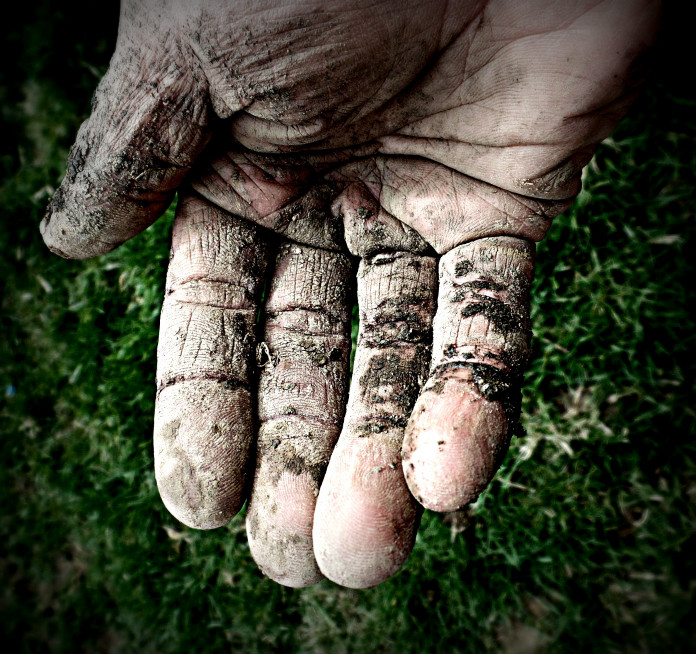In a way winter is the real spring – the time when the inner things happen, the resurgence of nature.
— Edna O’Brien, author
The garden may look bare and dreary in winter, but winter is nature’s time to rest and renew. Nurture nature with these seven tips to protect plants and enrich soil overwinter.
1Plant a cover crop
Bare ground is vulnerable to harsh winter weather. Planting a cover crop in your vacant garden improves soil health overwinter.
Rye is the most winter-hardy of all cereal grains. It germinates at temperatures as low as 33 F. Once established, winter rye tolerates temperatures as low as -30 F. Use a higher seeding rate when planting rye during cool weather.
In spring, till the rye into the soil to add nitrogen, phosphorous, potash and trace minerals.
2Apply a 4-inch to 6-inch thick layer of mulch
Mulch protects and insulates soil. It helps maintain ground temperature overwinter. Keeping ground temperature consistent is critical to plant health. A warm wave of weather can prompt plants out of dormancy prematurely. A cold snap back kills new growth, causing permanent damage to plants.
Wood chips are probably the first thing that comes to mind when you think of mulch. But straw, leaves and yard waste are also effective mulches to apply overwinter.
3Guard the ground with ground covers
Frost heaving occurs when a thick layer of ice forms underground and then thaws, pushing up perennial rootstock and displacing soil. Frost heaving does not damage soil, but it can harm plants. Ground covers help guard against frost heaving by regulating ground temperature and moisture.
Repurpose old blankets, fabric remnants and empty feed sacks as ground covers for small garden spaces. Evergreen boughs make great ground covers when your holiday décor begins to turn brown.
Snow is a nature’s ground cover. A thick layer of snow acts as an insulator, regulating the exchange of surface heat and the cool atmosphere. A thin layer of snow may not be sufficient protection; cover the ground with a fabric or bough ground cover and let snow pile on top.
4Feed soil with amendments
Soil amendments are added to the soil to enrich, repair and improve its quality and structure. Common amendments include cottonseed meal to increase soil acidity, and wood ashes to raise soil pH. Compost feeds enhances all soil types.
Soil amendments break down slowly over time. Amend soil late in the season and allow nutrients to seep in overwinter. Your garden will be in good shape for planting by spring.
5Leave foliage in place
At the end of the season flowers fade and foliage flops over and dies. Many gardeners cut foliage back in fall to keep the garden looking tidy overwinter. I leave foliage in place overwinter and prune at first signs of new growth in spring. Leaving dead foliage in place offers some root protection and provides food and shelter for winter wildlife.
6Shelter plants with cold frames and bell covers
A cold frame is a glass-covered frame that protects plants from cold, snow and ice. Cold frames retain heat from the sun. The temperature inside a cold frame can be up to 10 degrees warmer without adding supplemental heat. Station cold frames facing south to optimize winter sunlight.
Cold frames can also be used to extend the season and guard tender plants from severe storms.
A bell cover is a clear dome made of plastic or glass. Unlike a cold frame which covers multiple plants, a bell cover surrounds a single plant, creating a greenhouse atmosphere. Upcycle a 2-liter soda bottle to a DIY bell cover: Clean bottle well, cut off the top spout and place over plant.
7Wrap trees and shrubs with fabric
Bitter cold, snow and ice aren’t the only winter weather that threatens your plants. Sun scald can burn the bare bark of trees and shrubs. Young trees and trees with thin bark are most vulnerable to winter weather attacks.
Wrapping trees and shrubs with breathable fabric minimizes the risk. Burlap, commercial tree wrap or landscaping fabric allow light and moisture to pass through, while keeping trees and shrubs protected from breakage and sun scald. Make sure to wrap the entire tree, including the trunk.














